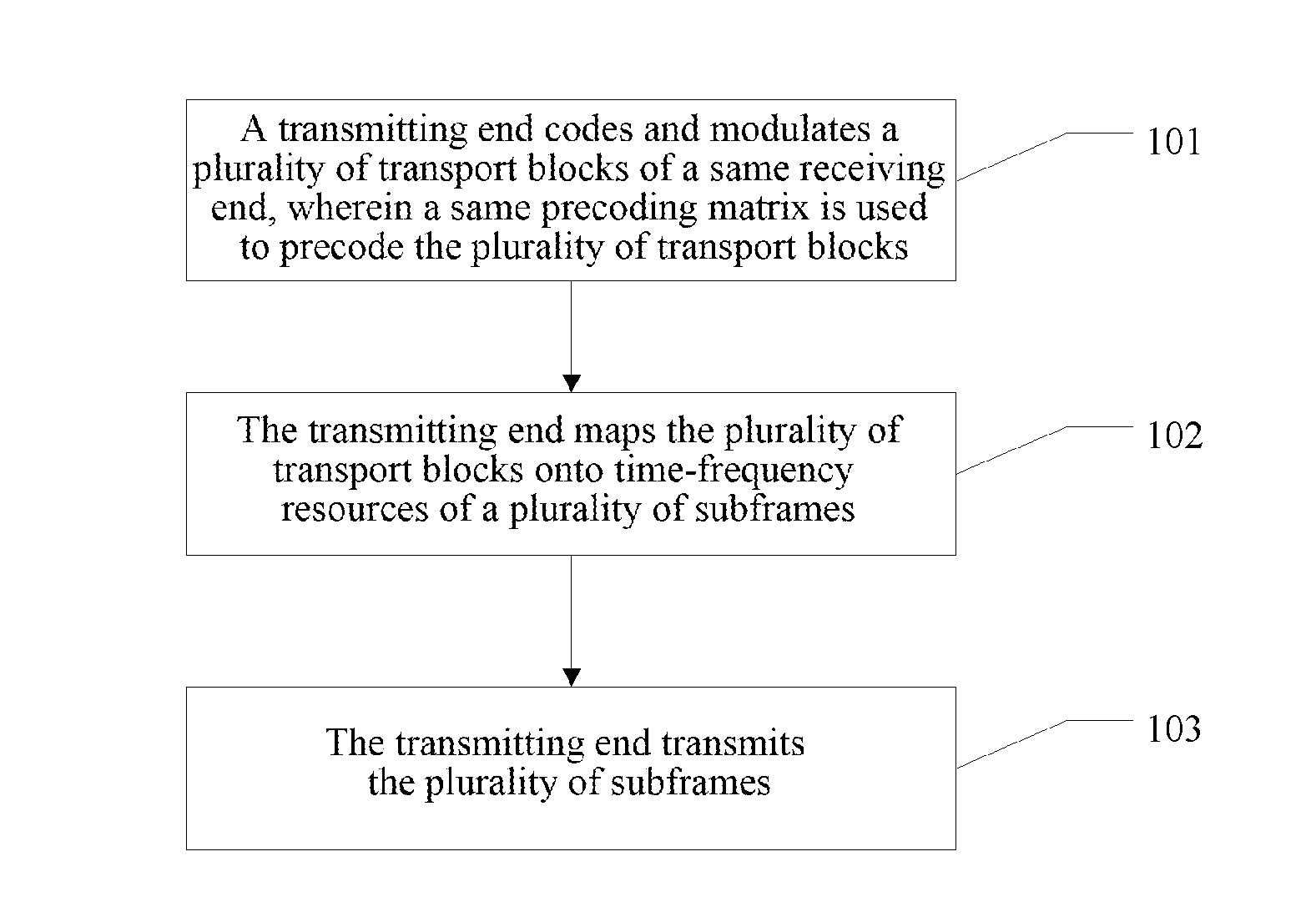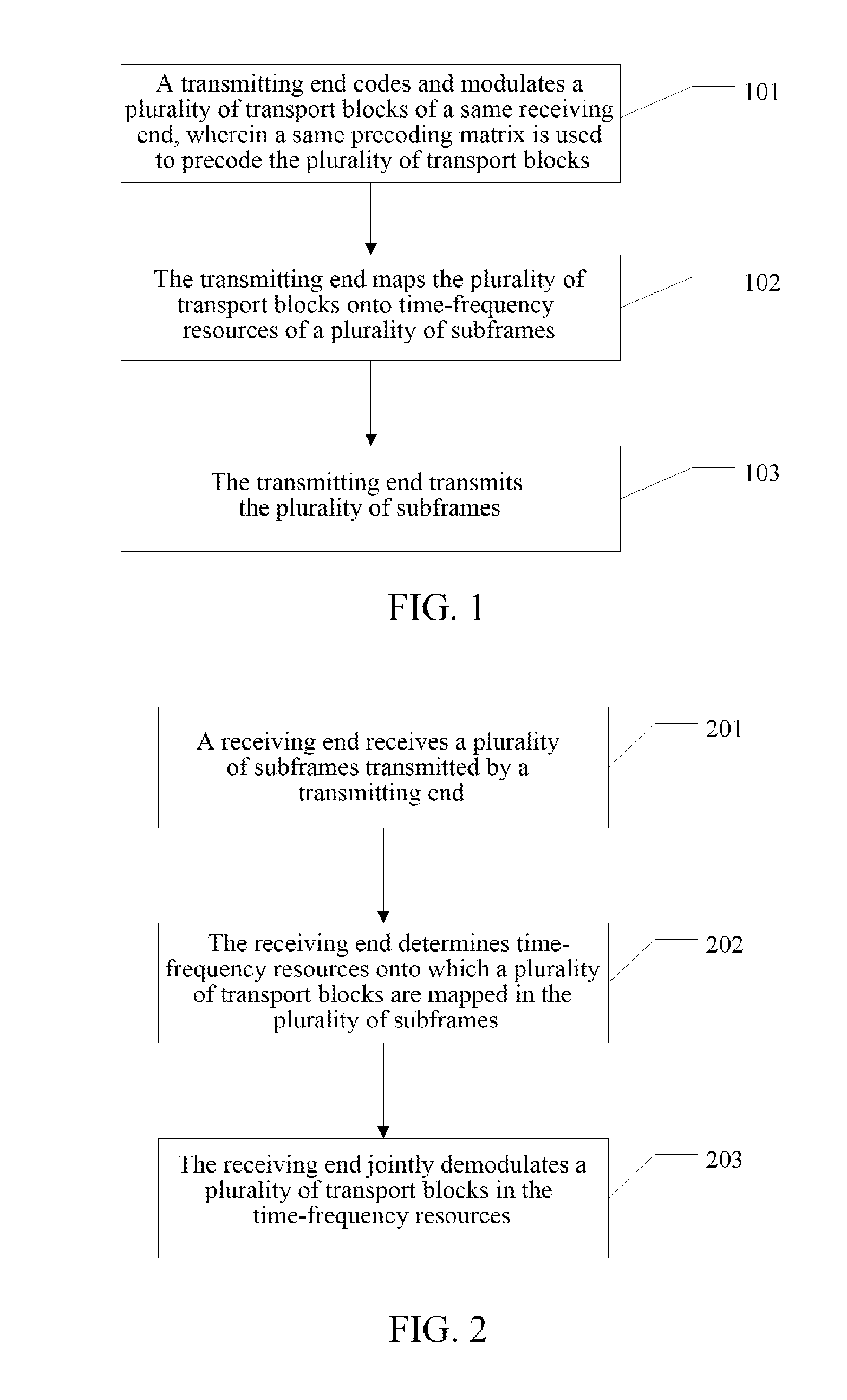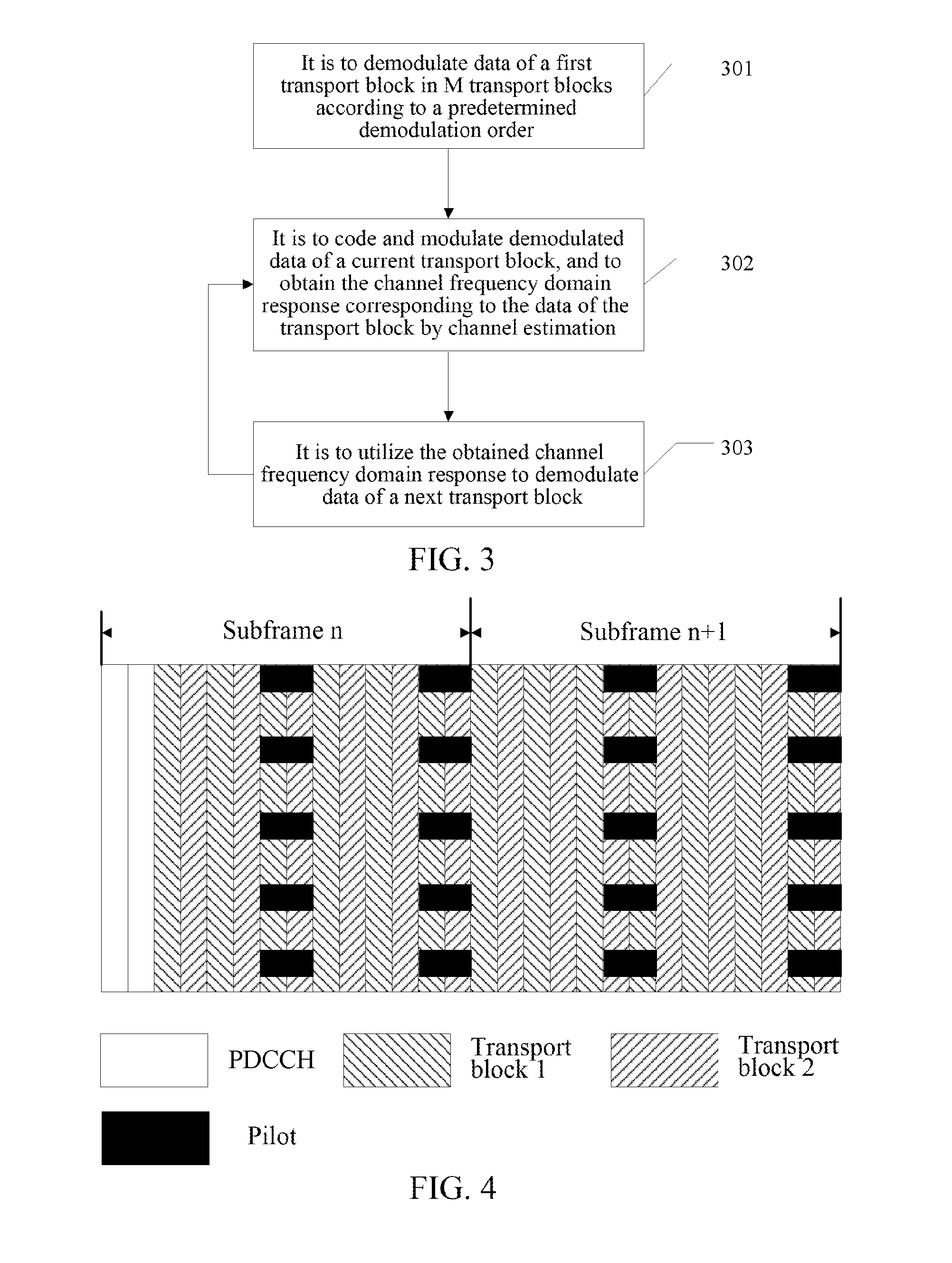Data Sending and Receiving Method and Data Sending and Receiving End
a data and receiving end technology, applied in the field of communication, can solve the problems of reducing the system performance of the transmitting end and the receiving end, and cannot meet the requirements, so as to improve the system performance, and improve the efficiency of coding and modulation
- Summary
- Abstract
- Description
- Claims
- Application Information
AI Technical Summary
Benefits of technology
Problems solved by technology
Method used
Image
Examples
application example 1
[0104]As shown in FIG. 4, assuming that a PDCCH transmitted by a base station occupies 2 OFDM symbols, the base station transmits two transport blocks which are transport block 1 and transport block 2 respectively to a UE in the downlink subframe n and downlink subframe n+1 through the multi-subframe scheduling, wherein the MCS of the transport block 1 is 8, and the MCS of the transport block 2 is 10, assuming that the way of crossing mapping used by the base station is that the crossing mapping is performed according to an OFDM symbol referred to as granularity, after coding and modulating the transport block 1 and transport block 2, the base station crossly maps data of the transport block 1 and transport block 2 to all OFDM symbols of the subframe n and subframe n+1.
[0105]Wherein except the first symbol and the second symbol of the subframe n, all symbols can be used for the mapping of the transport blocks, all symbols of the subframe n+1 can be used for the mapping of the transp...
application example 2
[0116]As shown in FIG. 5, assuming that a PDCCH transmitted by a base station occupies 3 OFDM symbols, the base station transmits two transport blocks which are transport block 1 and transport block 2 respectively to a UE in the downlink subframe n and downlink subframe n+1 through multi-subframe scheduling, wherein the MCS of the transport block 1 is 8, and the MCS of the transport block 2 is 9, assuming that the way of crossing mapping used by the base station is that the crossing mapping is performed according to a subcarrier referred to as granularity, after coding and modulating the transport block 1 and transport block 2, the base station crossly maps data of the transport block 1 and transport block 2 to all subcarriers of the subframe n and subframe n+1.
[0117]Wherein all subcarriers of the subframe n can be used for the mapping of the transport blocks, all subcarriers of the subframe n+1 can be used for the mapping of the transport blocks. Assuming that the base station maps...
application example 3
[0123]As shown in FIG. 6, assuming that a PDCCH transmitted by a base station occupies 2 OFDM symbols, the base station transmits two transport blocks which are transport block 1 and transport block 2 respectively to a UE in the downlink subframe n and downlink subframe n+1 through multi-subframe scheduling, wherein the MCS of the transport block 1 is 8, and the MCS of the transport block 2 is 10, assuming that the way of crossing mapping used by the base station is that the crossing mapping is performed according to an RE referred to as the granularity, after coding and modulating the transport block 1 and transport block 2, the base station crossly maps data of the transport block 1 and transport block 2 to all REs of the subframe n and subframe n+1.
[0124]Assuming that the base station maps the data of the transport block 1 onto odd-numbered subcarriers of odd-numbered symbols and even-numbered subcarriers of even-numbered symbols of the subframe n and subframe n+1; and maps the d...
PUM
 Login to View More
Login to View More Abstract
Description
Claims
Application Information
 Login to View More
Login to View More - R&D
- Intellectual Property
- Life Sciences
- Materials
- Tech Scout
- Unparalleled Data Quality
- Higher Quality Content
- 60% Fewer Hallucinations
Browse by: Latest US Patents, China's latest patents, Technical Efficacy Thesaurus, Application Domain, Technology Topic, Popular Technical Reports.
© 2025 PatSnap. All rights reserved.Legal|Privacy policy|Modern Slavery Act Transparency Statement|Sitemap|About US| Contact US: help@patsnap.com



